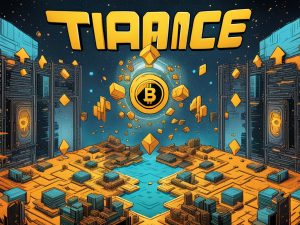Layer 1 and Layer 2 Networks: Understanding the Differences
If you’re involved in the crypto world, you’ve probably heard of Layer 1 and Layer 2 networks. But what exactly are they, and what sets them apart? Let’s dive into the details and explore the distinctions between these two types of networks.
What Is a Layer 1 Network?
A Layer 1 network is essentially a blockchain-based network that serves as the foundation for other layers. It offers several key features:
- Block Production: Miners or validators create blocks containing transaction information on the Layer 1 blockchain.
- Security: The consensus mechanism of a network is established on its Layer 1, utilizing methods like Proof-of-Work and Proof-of-Stake.
- Finality: Transactions on Layer 1 blockchains are considered immutable or irreversible once they are finalized.
Well-known examples of Layer 1 chains include Bitcoin, Ethereum, and Solana. Now that we have a clear understanding of Layer 1 blockchains, let’s explore Layer 2 networks.
What Is a Layer 2 Network?
In most cases, Layer 2 networks are also blockchains built on top of Layer 1 networks. They leverage the features provided by Layer 1 networks. But what do Layer 2 networks bring to the table?
In general, Layer 2 networks enhance the scalability of Layer 1 networks by bundling and processing transactions. Once this process is complete, they pass the transactions on to Layer 1 for finalization. To better understand this concept, consider the analogy provided by Jeroen van Amerongen in his tweet:
Jeroen explains that on Layer 2, his relatives spend money on gifts using their local currency. After a few months, they calculate everyone’s expenses and settle the final amount. This settlement occurs on Layer 1.
This approach saves processing power for Layer 1, resulting in faster transaction approvals. Moreover, with reduced load on Layer 1, transaction fees become more affordable for users.
Currently, numerous Layer 2 projects are thriving in the crypto space. Prominent examples include Optimism and Arbitrum, both of which employ Optimistic roll-up technology. Other upcoming projects like Starknet utilize ZK roll-up technology. For a deeper dive into these technologies, you can refer to our previous research.
Differences Between Layer 1 and Layer 2 Networks
Now that we’ve covered the basics, let’s recap the key differences between Layer 1 and Layer 2 networks. While Layer 1 manages network security, block production, and transaction finality, Layer 2 networks rely on another layer (Layer 1) for these functions.
Layer 2 networks process and bundle transactions before passing them on to Layer 1 for finalization. They enhance the scalability of Layer 1 networks, resulting in faster transaction times and lower fees. On the other hand, a standalone Layer 1 network struggles to scale without the support of a Layer 2 network.
To explore a detailed technical comparison between the two layers, refer to the table provided by Interexy:
Which Should You Choose: Layer 1 or Layer 2?
As a user, you may be wondering whether to opt for Layer 1 or Layer 2 networks. If you’re interested in participating in DeFi, trading NFTs, and playing blockchain games, Layer 2 networks are your best choice. They offer faster transaction speeds and lower fees.
For developers, the decision depends on your project’s goals. If your project aims to enhance Layer 1 functionality, building on Layer 1 is the way to go. However, if your focus is on catering to retail users, developing on Layer 2 offers faster deployment and reduced transaction costs. Keep in mind that choosing Layer 2 means potentially missing out on users who exclusively use the Layer 1 blockchain.
Conclusion
That wraps up our exploration of Layer 1 and Layer 2 networks. Armed with this knowledge, you can make informed decisions about which network to participate in based on your needs and objectives.





 By
By
 By
By
 By
By
 By
By
 By
By
 By
By